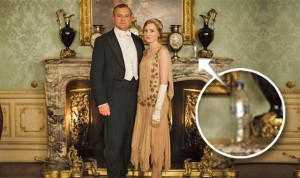Upon finishing Slavery & Public History I felt incredibly frustrated with Pitcaithley & Levine’s chapters, which focused primarily on the Lost Cause movement and their gnat-like ability to annoy public historians.
Interestingly, Pitcaithley and Levine suggest two different techniques to deal with the controversial Lost Causers. Pictcathley advises that, “… because both [professional and amateur historians] share a passion for history and an interest in its relevance to contemporary society, perhaps it would be worthwhile if they could engage in civil conversation.”[1] Levine, on the other hand, proposes that public historians should not invest the energy to engage with Lost Causers as, “No matter how many fallacies are exposed, however, and no matter how many hard facts are put in their place, the most dedicated Black-Confederate devotees will not change their opinions.”[2]
Reflecting upon Slavery & Public History as a whole, it does seem as if Levine’s solution of giving Lost Causers the cold shoulder may be the optimal choice for the time being. The articles by Nash, Vlach, & Melish indicate we have a lot of work to do within our own ranks before we begin lecturing outsiders. A group of professionally trained group of historians refusing to “tell it like it was” is far more harmful than a bunch of untrained Civil War revisionists.
Furthermore, these craven professional historians provide lackluster reasons for presenting a watered down version of history. They either assume the general public is too daft to understand the material, are unwilling to spend the time to perfect the interpretation’s wording and research, or simply want to avoid confrontational e-mails and tweets. While I realize funding probably plays into at least two of those reasons, it seems to me that presenting a generic, whitewashed history is extremely self-centered and lazy. If the popularity of Breaking Bad and Game of Thrones proves anything, it’s that the public is ready and willing to invest the time to understand complex stories and characters if we can facilitate an engaging way of presenting the information. In an ideal world, building a rapt and loyal audience would in turn help earn more funding.
My eternal grumpiness aside (I always feel like I come off as weirdly aggressive in these posts. My apologies.), as a young historian I was left curious whether using the media as leverage to replace outdated interpretations was common place. Or is it more common to face situations like Melish’s Patriots’ Park example where the change just takes a lot of time and revision?
P.S. – Thought you folks might enjoy this semi-relevant sketch by the comedy duo Key & Peele. Heads up, the language might be inappropriate for a workplace.
[1] “’A Cosmic Threat’: The National Park Service Addresses the Causes of the American Civil War.” In Slavery and Public History: The Tough Stuff of American Memory, edited by James Oliver Horton and Lois Horton, by Dwight T. Pitcaithley, 186. Chapel Hill: University of North Carolina Press, 2009.
[2] “In Search of a Usable Past: Neo-Confederates & Black Confederates.” In Slavery and Public History: The Tough Stuff of American Memory, edited by James Oliver Horton and Lois Horton, by Bruce Levine, 211. Chapel Hill: University of North Carolina Press, 2009.
